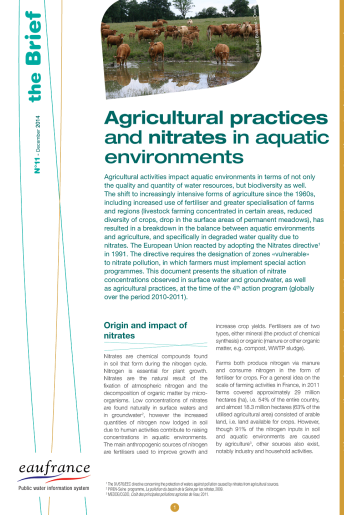Agricultural practices and nitrates in aquatic environments (2010-2011)
Publié le 15 Juin 2015
-Agricultural activities impact aquatic environments in terms of not only the quality and quantity of water resources, but biodiversity as well. The shift to increasingly intensive forms of agriculture since the 1960s, including increased use of fertiliser and greater specialisation of farms and regions (livestock farming concentrated in certain areas, reduced diversity of crops, drop in the surface areas of permanent meadows), has resulted in a breakdown in the balance between aquatic environments and agriculture, and specifically in degraded water quality due to nitrates. The European Union reacted by adopting the Nitrates directive1 in 1991. The directive requires the designation of zones « vulnerable » to nitrate pollution, in which farmers must implement special action programmes.
This document presents the situation of nitrate concentrations observed in surface water and groundwater, as well as agricultural practices, at the time of the 4th action program (globally over the period 2010-2011).
